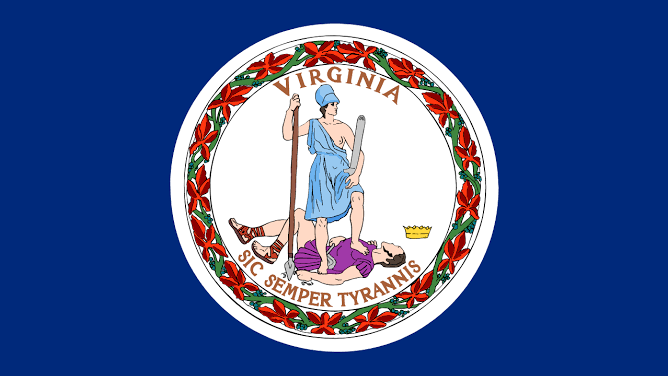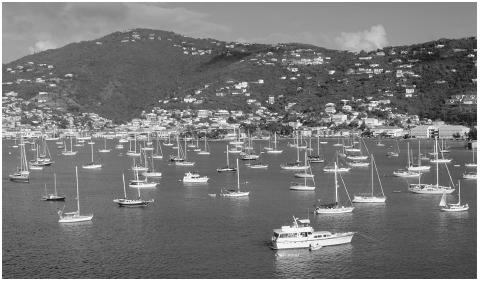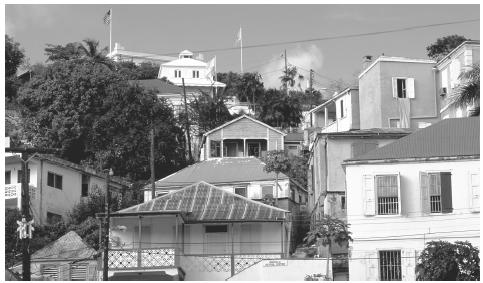Culture of United States Virgin Islands

Culture Name
Virgin Islander
Alternative Names
Cruzan or Crucian (Saint Croix); Thomian (Saint Thomas)
Orientation
Identification. In 1493, Christopher Columbus landed on an island he named Santa Cruz. Driven away by the Carib Indians, he sailed northward to a nearby group of islands he called Las Once Mil Virgenes, in honor of Saint Ursula. The French took Santa Cruz from Spain in 1650, renaming it Saint Croix. The towns of Christiansted and Frederiksted on Saint Croix and Charlotte Amalie, the capital, on Saint Thomas were founded by the Danes and named after Danish royalty.
Location and Geography. The country lies seventy miles east of Puerto Rico, in the Lesser Antilles of the Caribbean, and is composed of three large and fifty small islands totaling 136 square miles (352 square kilometers). Saint Croix, the southernmost and largest island, has land suitable for agriculture. Saint Thomas, forty miles to the north, has the highest point on the islands, with little tillable land. With a good port at Charlotte Amalie, it became a commercial center with reliance on the slave trade. The smallest of the main islands, Saint John, was donated by Laurence Rockefeller in 1956 as a national park. In 1996, Water Island, off the southern coast of Saint Thomas, was officially added to the country.
Demography. In 1999, the population was estimated at 120,000. The main population groups are West Indian (74 percent born in the Virgin Island,s and 29 percent born elsewhere), United States mainland (13 percent), Puerto Rican (5 percent) and others (8 percent). Blacks constitute 80 percent of the population, whites 15 percent, and others 5 percent.
Linguistic Affiliation. English is the official language. A Dutch Creole, Negerhollands, arose in the seventeenth century on Saint Thomas from interactions between Dutch planters and African slaves and spread to Saint John and Saint Croix. In the next century, German missionaries translated the Bible into that language. With emancipation and the influx of English Creole speakers from other islands, the use of Dutch Creole declined. An English Creole arose on Saint Croix and is still spoken, although its use is generally limited to older islanders. The United States takeover in 1917 resulted in American English becoming the standard administrative, educational, and economic language. "Virgin Islands English," which retains some Creole features, is widely used in personal and informal situations. Spanish has become increasingly important because of immigration from nearby islands; Spanish speakers make up 35 percent of the population of Saint Croix.
Symbolism. The territorial bird is the indigenous yellow breast, and the territorial flower is the yellow elder, commonly called "Ginger Thomas." The flag, adopted in 1921, is white with a yellow American eagle grasping three arrows in its left talon and with an olive branch in its right, between the blue initials "V" and "I." On its breast is a shield of the United States.
History and Ethnic Relations
Emergence of the Nation. By 1600, the native population had been wiped out by the Spanish. The Dutch and English settled on Saint Croix, with the Dutch being driven out around 1645. The French and the Knights of Malta took possession from Spain; Denmark, which had established slave plantations on Saint Thomas and Saint John, purchased Saint Croix from France in 1733. Although Denmark
U.S. Virgin Islands
suppressed the slave trade in 1803, the practice did not end until the British occupied the islands in 1807. The islands were returned to Denmark in 1815 and remained the Danish West Indies until their purchase by the United States in 1917. Originally under the control of the navy, they passed to the Department of the Interior in 1954.
National Identity. Many documents from the colonial period are in Denmark, not accessible to residents seeking to study the country's history. Since 1917, there has been a lot of migration to and from the islands to other parts of the Caribbean and to the mainland; until recently, less than half of the population was native-born. People emphasize the variety of cultures in the islands, and the advantage of being both "U.S." and "Caribbean."
Ethnic Relations. The first elected black governor in the United States, Melvin Evans, took office in 1970. Relations between ethnic groups are generally good, although there has been some racial violence.
Urbanism, Architecture, and the Use of Space
Several cultures have influenced local architecture. Wattle and daub construction, the use of cisterns to collect water, the "Big Yard" or common area, and verandas and porches can be traced to Africa. Danish culture is reflected in the design of towns, especially the "step streets"; street names; ovens and cookhouses; and red roofs. Yellow ballast brick, carried in ships from Europe, was used in construction along with locally quarried stone and coral. Open market areas, formerly the sites of slave markets, are found in the main towns. Many urban buildings date back to the colonial period.
Food and Economy
Food in Daily Life. Cassava, pumpkins, and sweet potatoes are native to the islands, and a variety of seafood is found in the surrounding waters. Many recipes are based on African sources. Okra is an ingredient in killaloo, a stew with local greens and fish, and in fungi, a cornmeal-based side dish; conch appears in fritters, chowders, and mixed with rice. Guava, soursop, and mango are eaten, along with mamey and mesple.
Food Customs at Ceremonial Occasions. Sugar cakes made with coconut and boiled sugar, are a traditional midafternoon snack. Maubi, a local drink, is made from the bark of a tree, herbs, and yeast. Souse is a stew of pig's head, tail, and feet, flavored with lime juice that is served on festive occasions.
Basic Economy. Per capita income is high, but the cost of living is expensive and there is constant pressure for new jobs. A major economic problem at the beginning of 1997 was the high level of governmental debt; since that time, expenditures have been cut, revenues have been increased, and fiscal stability has been restored. An increase in the tax on rum is expected to increase revenues. The islands' lack of natural resources makes them dependent on imports for local consumption and later reexportation. The basic unit of currency is the U.S. dollar.
Commercial Activities. The retail sector, including hotels, bars, restaurants, and jewelry stores, accounts for nearly half of the islands' revenues. The service sector is the largest employer; a small but growing area is financial services. Construction increased after the hurricanes of 1995. Tourism is the primary economic activity, accounting for more than 70 percent of the gross-domestic product and 70 percent of employment. Around two million tourists visit the islands annually; two-thirds are cruiseship passengers, but air visitors account for the majority of tourism revenue. Agriculture has declined in importance.
Major Industries. Manufacturing consists of textile, electronics, pharmaceutical, and watch assembly plants. Saint Croix has one of the world's largest oil refineries and an aluminum smelter. The need to rebuild after hurricanes has caused an upsurge in the construction industry.
Trade. Imports include crude oil, food, consumer goods, and building materials. The major source of export revenue is refined petroleum, with manufactured goods contributing a significant amount. The major trading partners are the United States and Puerto Rico.
Social Stratification
Classes and Castes. Historically, the society was divided along caste and color lines. Even after emancipation in 1848, ex-slaves' participation in the political process was restricted and their freedom of movement and emigration were limited by legislation. A result of Danish determination to maintain the status quo was the Fireburn of 1878, a labor revolt on Saint Croix that destroyed many plantations.
Symbols of Social Stratification. The use of Standard English characterizes the upper classes. Children often use native forms at home and speak Standard English at school. A higher percentage of males speak dialect than do females. The use of dialect is considered an important part of the culture but an impediment to educational and economic mobility.
Political Life
Government. Congress established the government through the Revised Organic Act of 1954. The Office of Insular Affairs of the U.S. Department of the Interior administers the islands. The governor and lieutenant governor are elected by popular vote for four-year terms. There is a fifteen-seat Senate whose members are elected for two-year terms. The islands elect one representative to the U.S. House of Representatives who may vote in committees and subcommittees. Virgin Islands citizens do not vote in United States' presidential elections. The judicial branch is composed of the U.S. District Court, with judges appointed by the President, and the Territorial Court, with judges appointed by the governor.
Leadership and Political Officials. The current governor and the current representative to the U.S. House are both Democrats. In the Senate, the Democratic Party holds six seats and the Republican Party and the Independent Citizens Movement have two seats each; the remaining five seats are held by independents.
Social Problems and Control. The high cost of living and the low pay scale for service sector jobs have created widespread discontent. Saint Croix has seen drive-by shootings, but most crime is property-related. To protect tourism, the government has increased the law enforcement budget. Local officials work with the Drug Enforcement Agency, Customs, and the Coast Guard to combat the illegal drug trade.
Social Welfare and Change Programs
The Department of Human Services attempts to provide for the needs of low-income persons, the elderly, children and families, and the disabled.
Nongovernmental Organizations and Other Associations
The Saint Croix Foundation is active in community development and has established anticrime initiatives. Environmental associations on the three main islands promote ecological awareness, sponsor guided outings, and encourage responsible legislation.
Gender Roles and Statuses
Division of Labor by Gender. Women are increasing their participation in the economic and political areas. The U.S. Small Business Administration established the Virgin Islands Women's Business Center in 1999 to encourage and train women business owners. The heroine of the 1878 labor rebellion in Saint Croix was "Queen Mary," a canefield worker. The current Senate president and the presiding judge of the Territorial Court are women.
Marriage, Family, and Kinship
Marriage. One in three families is headed by a single female parent. The rate of unmarried teenage pregnancy is increasing and is a major social concern. Wedding customs range from the traditional African "jump the broom" to European-influenced church ceremonies.
Domestic Unit. According to 1995 census data, married couples comprise 57 percent of households and unmarried females with children, 34 percent. The average household has two children.
Inheritance. The concept of jointly owned "family land" accommodates the pattern of alternately settling down and moving that has characterized the lives of many families since colonial times.

Boats in the Charlotte Amalie Harbor, Saint Thomas. Two million tourists visit the islands annually; two-thirds of them are cruiseship passengers.
Socialization
Infant Care. Women are responsible for infant care. Breast-feeding is supplemented by formula given in bottles; the use of formula results in early weaning. In more traditional households, folk beliefs about infant care, including the use of "bush tea" to induce sleep, are common.
Child Rearing and Education. A "bogeyman" is used as a threat to correct children's bad behavior. Education is compulsory and free. Multicultural education is seen as a necessity, but there is growing concern about the public schools, and those who can afford private schools generally choose that alternative. A higher percentage of females than males finish high school.
Higher Education. The University of the Virgin Islands, founded in 1962, has campuses on Saint Thomas and Saint Croix. It offers bachelor's degrees in a number of areas and master's degrees in business administration and public administration.
Etiquette
Politeness is considered important. Children are told to address adults as "sir" or "ma'am." Visitors are encouraged to smile, use greetings, and maintain a courteous attitude.
Religion
Religious Beliefs. The predominant religious affiliations are Baptist (42 percent), Catholic (34 percent), and Episcopalian (17 percent). Remnants of African culture are found in the belief in spirits.
Religious Practitioners. Under Danish rule, the Lutheran church was the state church; to practice any other religion, an official permit had to be granted. Permits were granted fairly easily, and sermons were not censored. With the coming of the Americans in 1917, the Catholic Redemptorists became the predominant religious order, and Catholicism was a major force through the 1940s, in terms of the influence which priests wielded over parishioners.
Rituals and Holy Places. Saint Thomas has the second oldest synagogue in the New World. Lord God of Sabaoth Lutheran Church and the Friedensthal Moravian Church on Saint Croix are the oldest congregations of their kind in the United States. To commemorate their freedom in 1848,

The colonial style architecture of Charlotte Amalie, Saint Thomas. European and African cultures have influenced local architecture.
former slaves built the All Saints Cathedral. The Arawak Indian carvings on Saint John may have religious significance.
Medicine and Health Care
There are hospitals on Saint Croix and Saint Thomas and a clinic on Saint John. Alternative healing methods are widely used, such as faith healing, chiropractic, and traditional "bush" remedies based on indigenous plants.
Secular Celebrations
Legal holidays include 1 January, New Year's Day; 6 January, Three Kings Day; 15 January, Martin Luther King Day; President's Day on the third Monday in February; Memorial Day on the last Monday in May; Independence Day, 4 July; Veterans Day, 11 November; and Thanksgiving.
Legal holidays commemorating local events include Transfer Day (from Denmark to the United States in 1917); 31 March, Organic Act Day; Virgin Islands/Danish West Indies Emancipation Day, 3 July; and D. Hamilton Jackson Day on 1 November. Carnival was officially reinstated in 1952 and is celebrated at different times. Carnival celebrations include parades, floats, stilt walking "Mocko Jumbies," steel pan competitions, beauty contests, and food fairs.
The Arts and Humanities
Support for the Arts. A nine-member Arts Council and a thirteen-member Historic Preservation Commission are appointed by the governor. Community arts groups exist on all three islands, with private support from a number of sources.
Literature. The Caribbean Writer, sponsored by the University of the Virgin Islands, showcases local writers. Lezmore Emanuel, a folk composer and poet; the literary historians Adelbert Anduze and Marvin Williams; and the poets Gerwyn Todman, Cyril Creque, J. P. Gimenez, and J. Antonio Jarvis have all made significant contributions.
Graphic Arts. The most famous locally born painter, Camille Pissaro, was born on Saint Thomas but moved to Paris. A number of contemporary artists work outside the country. Tourist preference has influenced the development of visual arts; Caribbean themes predominate in local galleries, such as the Caribbean Museum Center on Saint Croix.
Performance Arts. Mocko Jumbie stilt dancers perform at festivals and celebrations. Mocko Jumbies are masked and wear straw hats with cutouts for the eyes and mouth. This clothing was traditionally a woman's dress, but long trousers have become an acceptable part of the costume. The figure symbolizes the spirit world, and so the entire body must be disguised. Small decorative mirrors are worn to indicate invisibility. The stilts give the dancer additional height to frighten away evil spirits and also allow the Mocko Jumbie to chase misbehaving children and to keep crowds back from parade routes.
The Reichhold Center for the Arts, the Island Center Theater, and the Caribbean Community Theater give dance, music, and theater performances. Groups such as the Saint Croix Heritage Dancers and the Caribbean Dance Company preserve and teach traditional folk dances, many with African roots. The traditional folk dance, the quadrille, dates back to eighteenth century European settlers.
The State of the Physical and Social Sciences
The University of the Virgin Islands maintains an Agricultural Experiment Station, a Cooperative Extension Service, and the William P. MacLean Marine Science Center. Its Eastern Caribbean Center conducts social, survey, and environmental research. The Virgin Islands Ecological Research Station on Saint John provides support services for visiting scientists and students.
Bibliography
Corbett, Karen Suzanne. "An Ethnographic Field Study of Infant Feeding Practices in St. Croix, United States Virgin Islands." Ph.D. dissertation, University of Texas, Austin, 1989.
Domingo, Jannette O. "Employment, Income and Economic Identity in the U.S. Virgin Islands." Review of Black Political Economy 18 (1):37–57, 1989.
Fallon, Joseph E. "The Ambiguous Status of the U.S. Insular Territories." The Journal of Social, Political and Economic Studies 23 (2):189–208, 1998.
Jno-Finn, John. "The Current State of Multicultural Education in the Virgin Islands." Ph.D. dissertation, Vanderbilt University, 1997.
Martel, Arlene R. USVI: America's Virgin Islands, 1998.
Nicholls, Robert W. "The Mocko Jumbie of the U.S. Virgin Islands: History and Antecedents." African Arts 32 (3): 48–71, 1999.
Olwig, Karen Fog. "Caribbean Place Identity: From Family Land to Region and Beyond." Identities 5 (4): 435–67, 1999.
Richards, Heraldo Victor. "An Investigation of the Relationship between Virgin Islands English Creole Usage and Reading Achievement among Third, Fifth, and Seventh Graders in the United States Virgin Islands." Ph.D. dissertation, Northwestern University, 1993.
Simmonds, Ruby. "The Words Beneath the Sand: An Examination of the Works of Three Virgin Islands Poets." Doctor of Arts in Humanities dissertation, Clark Atlanta University, 1995.
Willocks, Harold. The Umbilical Cord: The History of the United States Virgin Islands, 1995.
